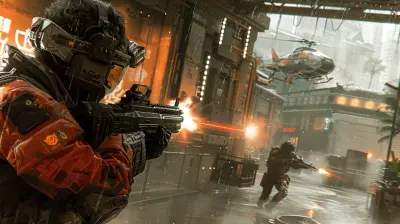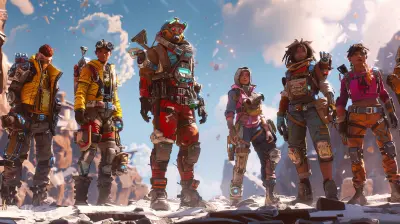20 December 2024
Picture this: a speedrunner fires up a game, finds a crack in its code, and squeezes through it like water through a leaky pipe, shaving hours off the expected playtime. On the other side of the world sits a game developer, staring at their screen, realizing their carefully crafted creation just turned into an unintended amusement park ride. That, my friend, is the fascinating tug-of-war between the speedrunning community and game developers—a battle of wits, creativity, and, oddly enough, mutual respect.
It’s not just bugs and glitches; it’s a global chess match between those who play games and those who make them. Let’s dive into the relationships, reactions, and repercussions when speedrunners push the limits, and developers push back.
The Art of Speedrunning: Breaking Without Breaking
Speedrunning is more than just playing fast—it’s a whole art form. Think of speedrunners as magicians with controllers, bending the rules of the virtual universe to fit their agenda. They’re not just playing the game; they’re dissecting it, analyzing every possibility like scientists in a lab. And what are their favorite tools? You guessed it—glitches.Glitches are to speedrunners what shortcuts are to marathon runners. They’re not outright cheating but rather finding that sneaky path through the woods that the map overlooked. These bugs aren’t necessarily errors; they’re often hidden doors left ajar in a game’s code. And boy, do speedrunners love walking through them.
But here’s the kicker: many speedrunners argue that glitch exploitation doesn’t disrespect the game—it elevates it. They see it as uncovering the game’s potential, peeling back its layers like an onion to expose its deepest, weirdest secrets. It’s like finding a hidden level of genius in a song that only plays backward.
The Developers' Perspective: Pride or Panic?
Now imagine being a game developer who spent years lovingly crafting a beautiful, immersive world. And then, someone skips half of it by walking through a wall. Ouch, right? For developers, seeing their work turned upside down can hurt. But the reactions vary—from frustration to fascination.1. The Frustrated Devs: "That's Not How It Was Meant to Be Played!"
Some developers see glitches as blemishes, the digital equivalent of spinach stuck in a masterpiece’s teeth. They might rush to patch the exploit, often issuing updates faster than you can say, "Speedrun world record." Why? Because to them, the glitch undermines their vision of how the game should be experienced.Take "Dark Souls," for example. This notoriously challenging series is a speedrunning favorite. The developers, FromSoftware, have patched several exploits over the years, particularly ones that made boss fights or traversal trivial. To their credit, they’re not trying to stifle creativity—they just want their carefully balanced, punishing experience to remain intact.
2. The Fascinated Devs: "Wait… How Did You Do That?"
On the flip side, some devs are downright amused by glitch exploits. Instead of seeing them as flaws, they view them as happy accidents—or even as opportunities to improve. These developers often marvel at the ingenuity of speedrunners who find innovative ways to play their games.Consider the creators of "Celeste." They’ve gone on record saying they enjoy watching speedrunners break their game. In fact, they’ve even added features, like a speedrunning timer, to support the community. That’s a developer who sees glitch exploitation not as vandalism but as art.
Glitches That Became Legends
It’s worth noting that some glitches have become so iconic they’re almost as famous as the games themselves. Let’s take a little nostalgia trip, shall we?1. The "Backwards Long Jump" in Super Mario 64
Ah, the crown jewel of speedrunning glitches. The Backwards Long Jump (BLJ) lets Mario zip up staircases at warp speed, skipping entire chunks of the game. Nintendo probably didn’t plan for this, but let’s be real—it’s hard not to admire the sheer absurdity of it. And while Nintendo has patched similar exploits in newer games, they’ve left the BLJ untouched in certain re-releases. Coincidence? Maybe. Nostalgia? Absolutely.2. "Save Glitching" in Skyrim
Who doesn’t love Skyrim glitches? One infamous exploit lets players manipulate save files to warp across the map or skip key quests. Bethesda, known for both its sprawling games and their hilarious bugs, seems to take this in stride. Instead of fixing every glitch, they’ve leaned into the chaos, giving players more freedom to enjoy their sandbox—even if it’s in ways they never intended.
Why Fix It? The Patch Debate
There’s always a debate about whether developers should patch glitches or leave them alone. It isn’t as black-and-white as you might think. On one hand, fixing glitches can polish a game and align it with the developer’s vision. On the other hand, it can alienate the very players who adore finding and exploiting those quirky flaws.Take "Minecraft," for example. Mojang has a history of both patching and preserving certain quirks, carefully balancing between keeping the game functional and embracing its chaotic charm. It’s a delicate dance—like walking a tightrope while juggling flaming blocks of code.
The Odd Love Affair: Speedrunners and Developers
Here’s what’s fascinating: despite the apparent conflict, there’s often mutual respect between speedrunners and developers. Sure, speedrunners are essentially poking holes in the developers’ hard work, but at the same time, they’re showcasing the game in ways most people would never imagine.In fact, some developers actively support the speedrunning community. Events like Games Done Quick (GDQ), which raises millions for charity, often feature developers cheering on speedrunners as they demolish their games. It’s like watching someone tear apart your Lego masterpiece only to rebuild it into a rocket ship. It wasn’t what you planned, but wow, it’s cool.
So, Who Wins?
At the end of the day, it’s not really about winners or losers. Speedrunning and game development exist in a weird, symbiotic relationship. Speedrunners thrive on finding cracks, and developers learn from watching their games be broken. Each side pushes the other to innovate—speedrunners by pushing the limits of what’s possible, and developers by creating tighter, smarter designs.It’s a bit like a dance. Sure, they step on each other’s toes occasionally, but in the end, they’re creating something beautiful together—a shared celebration of gaming, creativity, and human ingenuity.
Final Thoughts
Whether you’re team speedrunner or team developer, one thing’s clear: glitches and exploits are more than technical snafus. They’re a testament to the creativity of both players and creators. They remind us that games are living, breathing systems, full of surprises waiting to be uncovered.So the next time you see a speedrunner cruising through your favorite game at lightning speed, don’t roll your eyes. Instead, appreciate the artistry of it. And if you’re a developer, take a deep breath—you may just find inspiration in the chaos.










Selina Dorsey
Loved this article! It's fascinating to see how developers react to speedrunners finding glitches. It’s like a game of cat and mouse with creativity!
February 5, 2025 at 5:53 AM